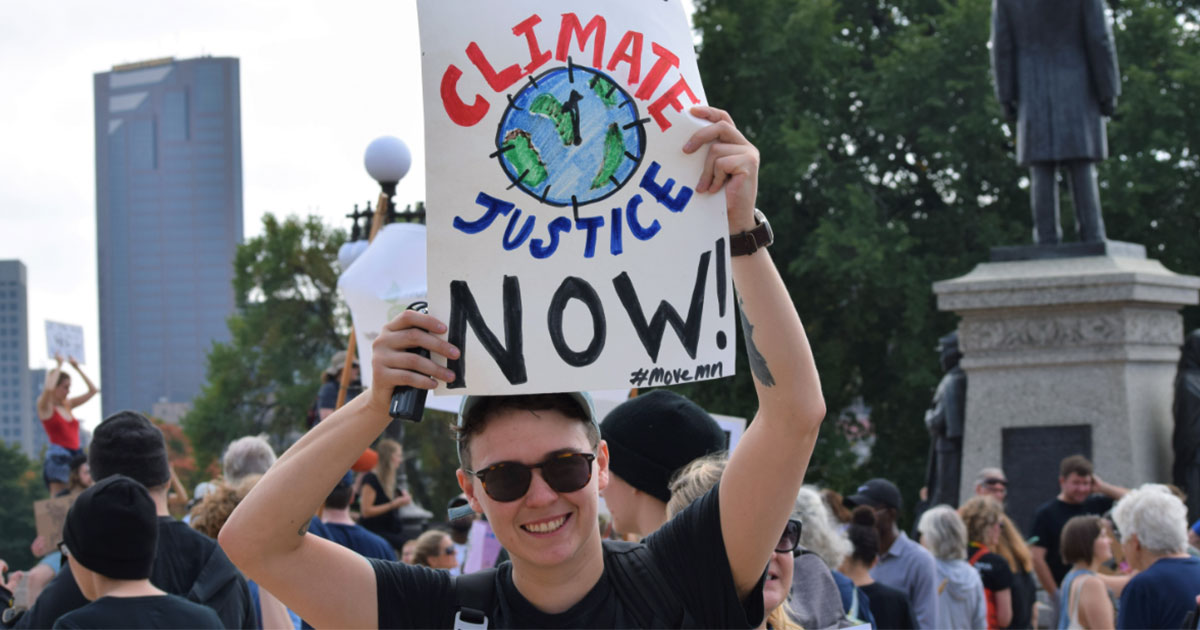Move Minnesota Reflects on Earth Day’s 50 Year Legacy
This week, we celebrate the 50th anniversary of Earth Day – the direct result of a people powered movement. In 1969, a massive oil spill in Santa Barbara released an estimated 100,000 barrels of crude oil into the Pacific Ocean destroying thousands of animals and plant life in its surrounding. In 1970, 10% of the United States population took to the streets calling for the Millions mobilized and demanded that Americans, especially our government and private institutions, fundamentally rethink our relationship to the planet.
Since that initial Earth Day, monumental environmental protections were put in place. Immediately, the United States saw the creation of the Environmental Protection Agency (1970) and the passage of the Clean Water Act (1972) and Endangered Species Act ). Earth Day’s legacy has continued in more recent years too, and includes the Clean Air Act of 1990; Executive Order 12898 (1994), the Environmental Justice order that requires that disproportionately high negative impacts on black, indigenous, people of color, and low-income populations be mitigated; and Massachusetts v. EPA (2007), which gave the EPA authority to regulate greenhouse gases.
Many of the fundamentals of our society did not shift, however, so that even as we cleaned our air and water, we managed to emit more climate pollution in the last thirty years than the amount humans emitted in all previous combined years since the Industrial Revolution.
Yet we find ourselves in remarkable times. As COVID-19 dominates our lives and headlines, our air and climate are cleaner and carbon emissions are down. Some of the reasons for this are reduced rates of manufacturing and industrial processing. Another crucial reason our emissions have fallen is that people are driving fewer miles in their cars. With transportation as the leading state and national source of carbon emissions, that’s a big deal.
Perhaps it is time to acknowledge that many of us are car dependent because we designed our communities and streets in a way that makes only cars dependable. But car dependence does not equal community health or vitality. The top five largest economies of the world have an average driving rate of 34%, far below our 83% driving rate. And many of these cities are also home to incredible educational institutions, birthed arts and music genres, and inspired social justice movements—their strength isn’t just in the economy.
As we pause on Earth Day 2020 to consider where our society needs to go, let’s center that thinking on what’s important to communities and to people. Community health means children with the freedom to play safely on the boulevard, parents with time to prepare dinner instead of stuck in rush-hour traffic, workers without the stress of unreasonable monthly payments, and neighbors with the ability to safely cross the street.
We have an opportunity—right now—to make small but incredibly consequential changes that can build long-term (and long pursued!) community health and strength. Many of our cities and towns have temporarily closed streets or widened sidewalks to allow people to get outside and still achieve safe social distances. Let’s make these changes permanent! We can also paint bus lanes tomorrow, while the streets are empty, and we can make myriad other adjustments to our streets, sidewalks, and stoplights so that transit, biking, and walking make more sense for more of us. In short, if we all act quickly to support these changes, we can change our social and economic future for the better.
The first Earth Day was led by people who articulated a vision for their future and for their home. Let’s celebrate this Earth Day by planning and acting to protect our planet and each other. Get involved and sign up to receive the latest news and action alerts.

